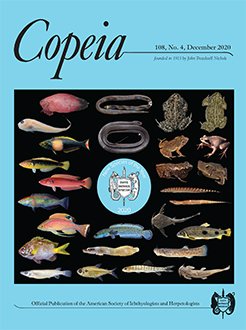The ecology of many ectotherms depends heavily on their ability to navigate the surrounding thermal environment in a manner that maintains body temperature (Tb) within or near some optimal temperature range at least some of the time. From April–December 2016, we measured shell temperatures (Ts) and water temperatures (Tw) in two Spotted Turtle (Clemmys guttata) populations in southeastern Georgia using iButton temperature loggers. We attached radio transmitters and iButtons to the carapace of adult Spotted Turtles (n = 18 and 11 in each population, respectively) in early spring. Temperature loggers recorded a Ts measurement every 90 minutes (accuracy = 0.5°C), and we restricted our analyses to temperatures recorded between sunrise and sunset. Monthly mean Ts ranged from 12.3±3.4 to 27.1±2.7°C (SD), and seasonal variation accounted for a majority of the observed variation in temperatures. We found a strong positive correlation between weekly mean Ts and weekly mean Tw at one site that remained flooded throughout the study (P < 0.0001, R2 = 0.99). Tw could not be measured at the other site because it dried completely early in the study. Spotted Turtles did occasionally (<5% of total temperature observations) bask to raise Ts above that of the surrounding Tw. Gravid females achieved significantly higher daily maximum temperatures (26.2°C) than males (24.5°C) during the four weeks surrounding egg development (P = 0.043). In general, Spotted Turtles at the southern end of their range appear to spend a majority of their time conforming to environmental temperatures that often fall within the preferred range for the species.
How to translate text using browser tools
20 November 2020
Thermal Ecology of Spotted Turtles (Clemmys guttata) in Two Southern Populations
Houston C. Chandler,
Benjamin S. Stegenga,
Dirk J. Stevenson
ACCESS THE FULL ARTICLE





